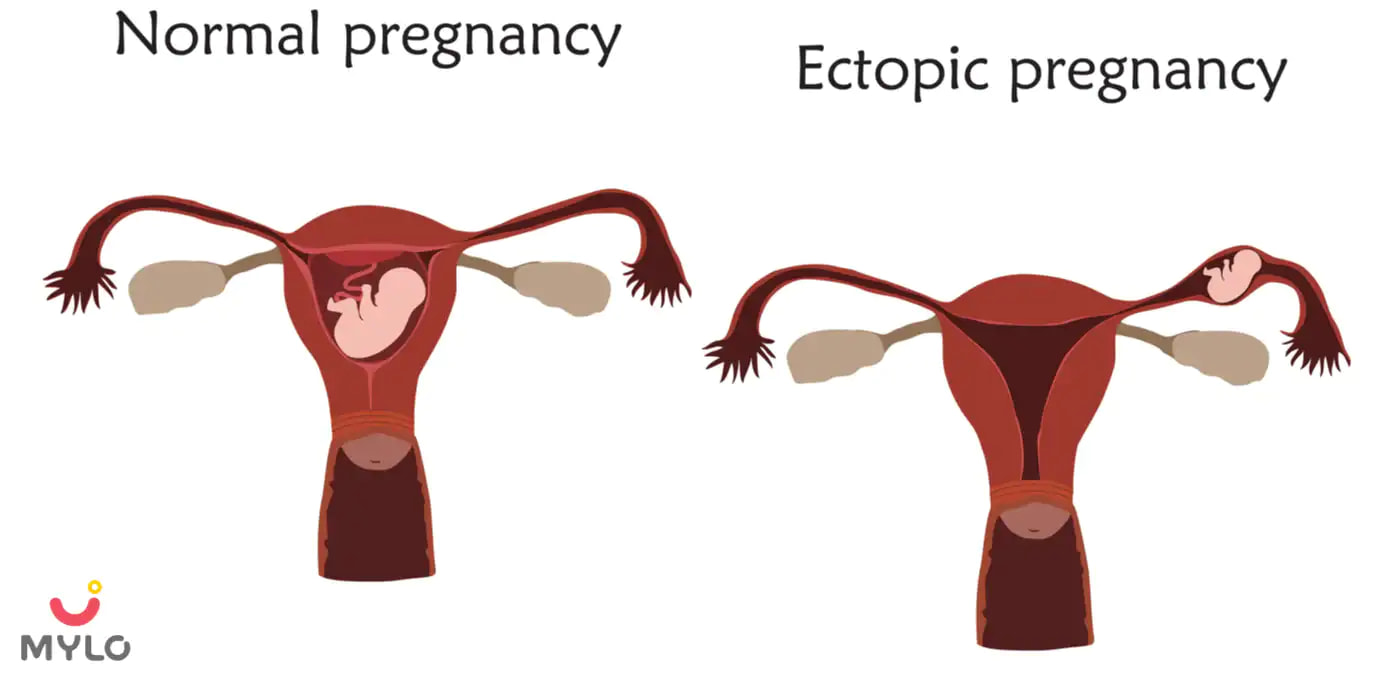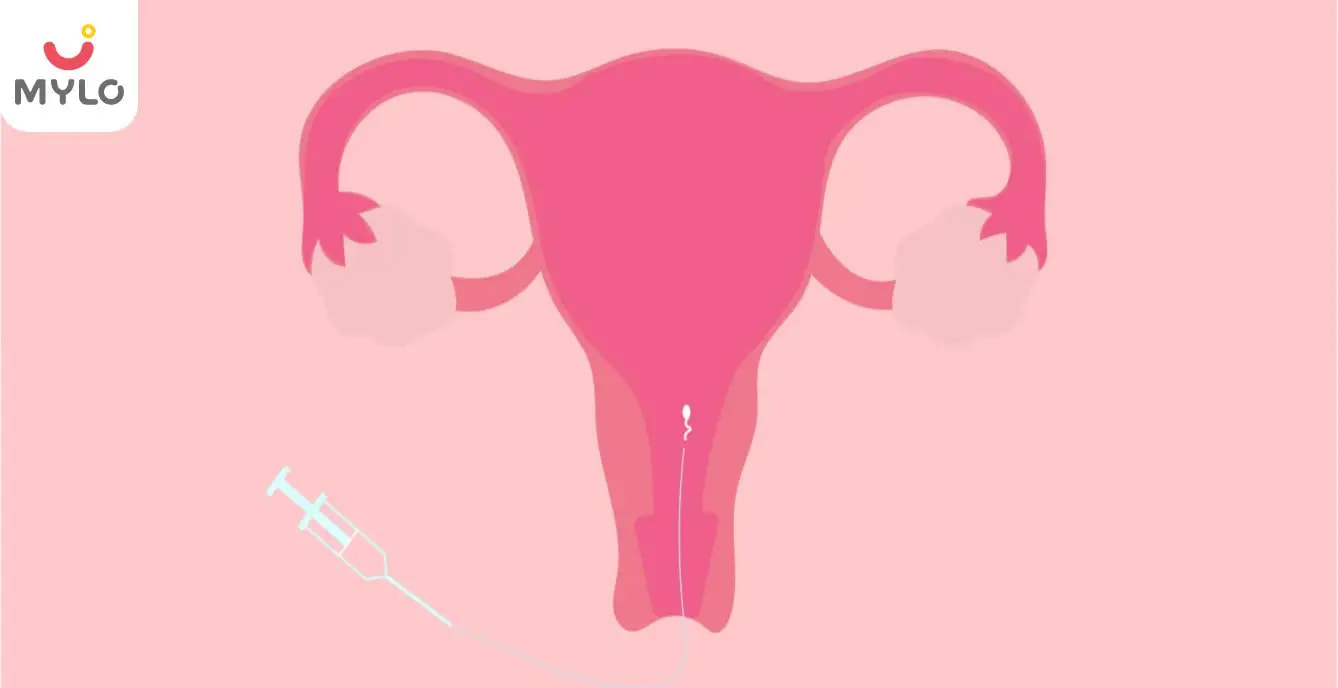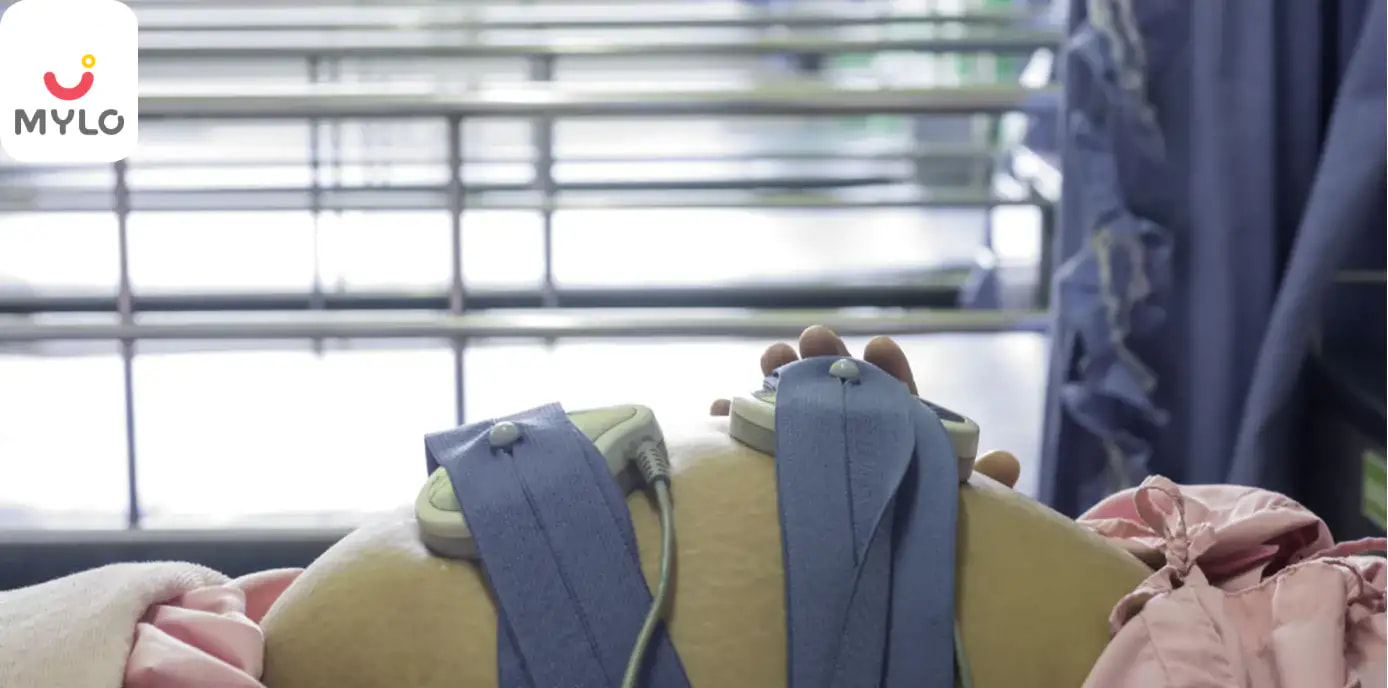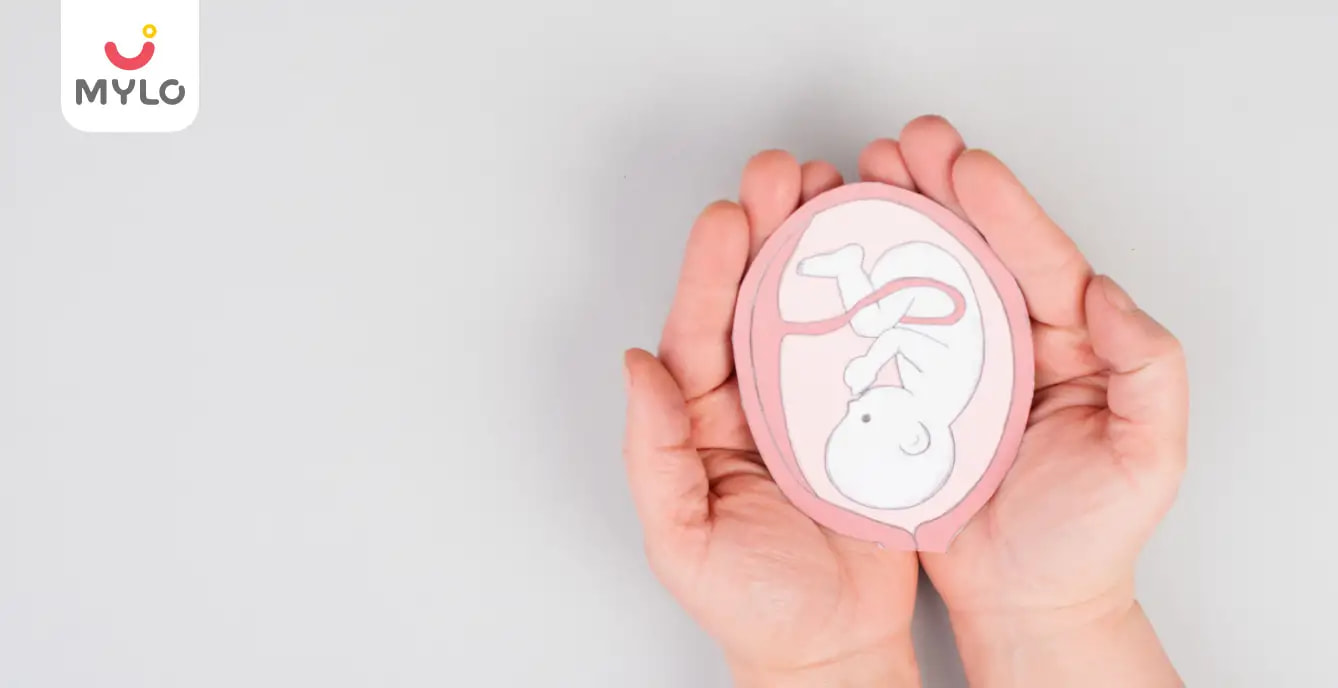Home

Contraceptive

IUD in Pregnancy: Causes, Symptoms & Risks
In this Article
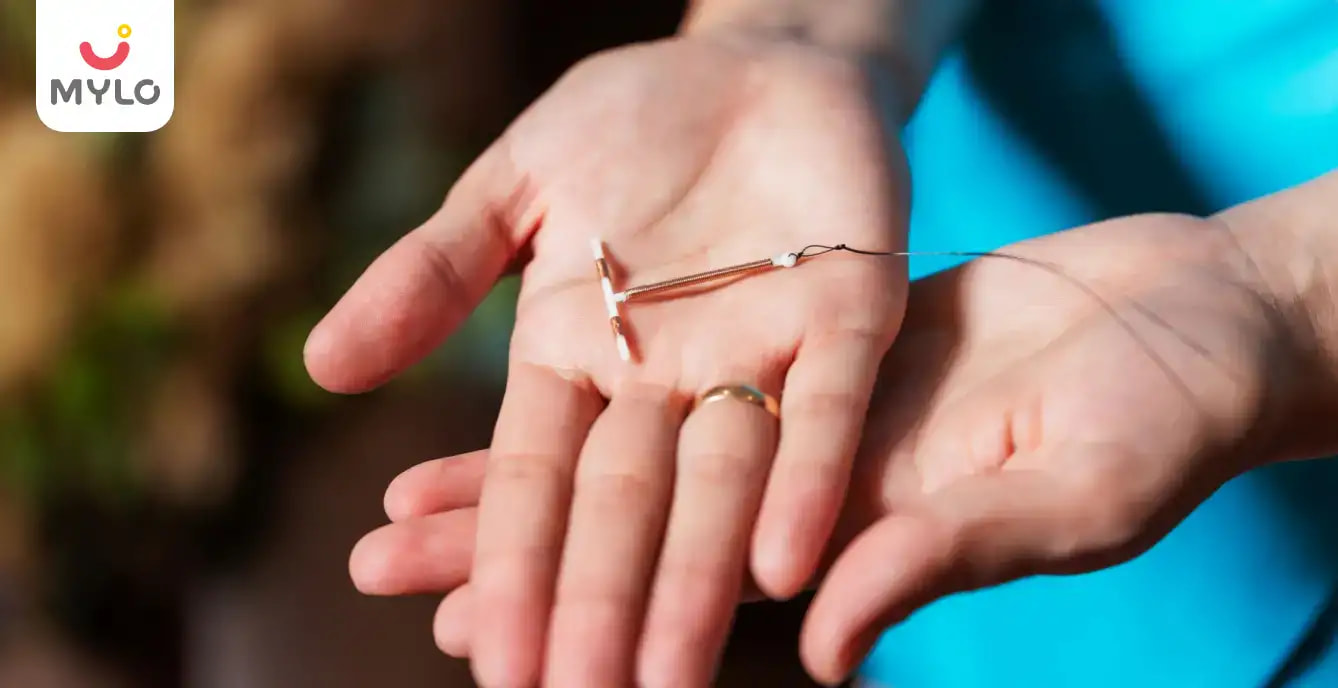
Contraceptive
IUD in Pregnancy: Causes, Symptoms & Risks
Updated on 3 November 2023
What is IUD in pregnancy?
Intrauterine device or IUD in pregnancy is one of the most common and dependable methods of reversible birth control on the market. It is a little T-shaped device with hormones that are constructed of copper or plastic. It is inserted into the uterus through the cervix to prevent fertilisation. When the IUD is no longer effective, a doctor, advanced practice nurse, or physician assistant can remove it using one of two strings. It can also be removed if the patient wishes to become pregnant or if something goes wrong.
Because the chance of getting pregnant is so low—less than 1 per cent per year—about 10 per cent of women choose this method. In addition, many women get an IUD put in right after giving birth, so they already have a way to stop having babies when they leave the hospital.
Types of IUDs in pregnancy
There are two kinds: the copper IUD and the hormonal IUD. Both are among the most effective ways to stop pregnancy; depending on the type, they can stay in place for 5 to 10 years. However, IUDs, whether they are made of copper or hormones, do not protect against sexually transmitted diseases (STIs).
Experts say that IUDs are a good way to prevent pregnancy for young adults and teens because they last for a long time, don't need to be cared for every day, and work very well.
How effective is an IUD at preventing pregnancy?
Both types of IUDs are quite effective at preventing pregnancy. Over a year, fewer than one in every 100 average couples who use an IUD will have an unintended pregnancy.
The copper IUD is instantly effective and can be used for up to ten years. Depending on the brand, hormonal IUDs can last 3 to 6 years. As a result, the IUD is a suitable option for folks who aren't yet ready to have children. An IUD can stay in place for a long time, but it can be removed at any time by a doctor or nurse practitioner.
What causes can lead to IUD failure?
Clinicians aren't always sure what goes wrong with an IUD. Some of the reasons it doesn't work are that the IUD falls out (about 10% of women do this in the first year) or that it wasn't put in right.
Symptoms of IUD in pregnancy
Suppose a woman gets pregnant while using an IUD during pregnancy. For instance, if a woman gets pregnant with Copper IUD symptoms, she may have some of the usual signs of pregnancy, mainly if the embryo has already settled in the uterus.
Some of these signs are:
-
Nausea
-
Fatigue
-
A missed period
-
Tender breasts
-
Food cravings
-
Changes in mood
When a woman using an IUD gets pregnant, she may also notice that the strings are out of place, missing, or not the same length.
Risks of IUD in pregnancy
Yes, a woman who uses an IUD can get pregnant, but it doesn't happen often.
IUDs work more than 99% of the time. However, fewer than 1 in 100 people with an IUD will get pregnant.
All IUDs, whether they are hormonal, non-hormonal, or made of copper, have the same rate of failure.
Between 2 and 10% of people, the IUD can either partially or completely slip out of the uterus.
The woman could get pregnant if this happens. She might not notice that the IUD is no longer in the right place.
In some cases, pregnancy can happen because the IUD hasn't started to work yet.
A woman may also have problems with her IUD if she has had it in for longer than the manufacturer suggests.
What to expect during your consultation
The doctor will do a urine or blood test to ensure the woman is pregnant like a late-period copper IUD-negative pregnancy test. Human chorionic gonadotropin is something that pregnancy tests look for. This hormone is only made by a pregnant woman's body.
After that, the doctor will look at your pelvis. If the IUD's string is visible, the doctor will take it out. If they can't see the string of the IUD, they will use an ultrasound to find it. Whether you want to keep the pregnancy or end it, IUD during pregnancy should be taken out of the woman.



Written by
Ishmeet Kaur
Ishmeet is an experienced content writer with a demonstrated history of working in the internet industry. She is skilled in Editing, Public Speaking, Blogging, Creative Writing, and Social Media.
Read MoreGet baby's diet chart, and growth tips

Related Articles
Related Questions
Hello frnds..still no pain...doctor said head fix nhi hua hai..bt vagina me pain hai aur back pain bhi... anyone having same issues??

Kon kon c chije aisi hai jo pregnancy mei gas acidity jalan karti hain... Koi btayega plz bcz mujhe aksar khane ke baad hi samagh aata hai ki is chij se gas acidity jalan ho gyi hai. Please share your knowledge

I am 13 week pregnancy. Anyone having Storione-xt tablet. It better to have morning or night ???

Hlo to be moms....i hv a query...in my 9.5 wk i feel body joint pain like in ankle, knee, wrist, shoulder, toes....pain intensity is high...i cnt sleep....what should i do pls help....cn i cosult my doc.

Influenza and boostrix injection kisiko laga hai kya 8 month pregnancy me and q lagta hai ye plz reply me

RECENTLY PUBLISHED ARTICLES
our most recent articles

Diet & Nutrition
গর্ভাবস্থায় আলুবোখরা: উপকারিতা ও ঝুঁকি | Prunes During Pregnancy: Benefits & Risks in Bengali

Diet & Nutrition
গর্ভাবস্থায় হিং | ঝুঁকি, সুবিধা এবং অন্যান্য চিকিৎসা | Hing During Pregnancy | Risks, Benefits & Other Treatments in Bengali

Women Specific Issues
স্তনের উপর সাদা দাগ: লক্ষণ, কারণ এবং চিকিৎসা | White Spots on Nipple: Causes, Symptoms, and Treatments in Bengali

Diet & Nutrition
গর্ভাবস্থায় পোহা: উপকারিতা, ধরণ এবং রেসিপি | Poha During Pregnancy: Benefits, Types & Recipes in Bengali

Diet & Nutrition
গর্ভাবস্থায় মাছ: উপকারিতা এবং ঝুঁকি | Fish In Pregnancy: Benefits and Risks in Bengali

Diet & Nutrition
গর্ভাবস্থায় রেড ওয়াইন: পার্শ্ব প্রতিক্রিয়া এবং নির্দেশিকা | Red Wine During Pregnancy: Side Effects & Guidelines in Bengali
- ইনার থাই চ্যাফিং: কারণ, উপসর্গ এবং চিকিৎসা | Inner Thigh Chafing: Causes, Symptoms & Treatment in Bengali
- গর্ভাবস্থায় ব্রাউন রাইস: উপকারিতা ও সতর্কতা | Brown Rice During Pregnancy: Benefits & Precautions in Bengali
- Velamentous Cord Insertion - Precautions, Results & Safety
- Unlock the Secret to Flawless Skin: 7 Must-Have Qualities in a Face Serum
- Unlock the Secret to Radiant Skin: How Vitamin C Serum Can Transform Your Complexion
- Gender No Bar: 10 Reasons Why Everyone Needs a Body Lotion
- Unlock the Secret to Radiant Skin How to Choose the Perfect Body Lotion for Your Skin Type
- Top 10 Reasons to Apply a Body Lotion After Every Bath
- Communication in Toddlers: Milestones & Activities
- How to Improve Vocabulary for Toddlers?
- A Comprehensive Guide to Understanding Placenta Accreta
- Vulvovaginitis in Toddlers Causes, Symptoms and Treatment
- A Comprehensive Guide to Understanding Cerebral Palsy in Children
- Bitter Taste in Mouth During Pregnancy: Understanding the Causes and Remedies


AWARDS AND RECOGNITION

Mylo wins Forbes D2C Disruptor award

Mylo wins The Economic Times Promising Brands 2022
AS SEEN IN
















- Mylo Care: Effective and science-backed personal care and wellness solutions for a joyful you.
- Mylo Baby: Science-backed, gentle and effective personal care & hygiene range for your little one.
- Mylo Community: Trusted and empathetic community of 10mn+ parents and experts.
Product Categories
baby carrier | baby soap | baby wipes | stretch marks cream | baby cream | baby shampoo | baby massage oil | baby hair oil | stretch marks oil | baby body wash | baby powder | baby lotion | diaper rash cream | newborn diapers | teether | baby kajal | baby diapers | cloth diapers |



